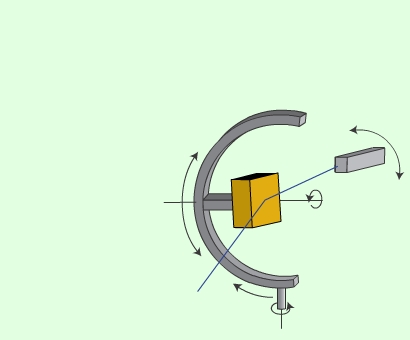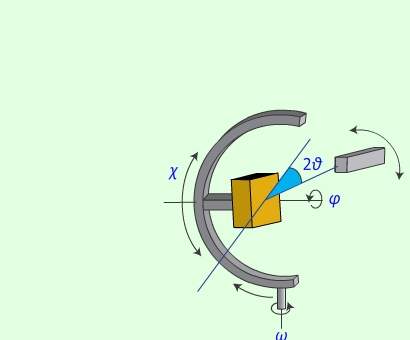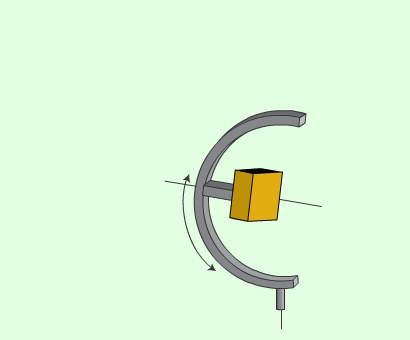Re-use of this resource is governed by a Creative Commons
Attribution-
NonCommercial-ShareAlike 4.0 International
https://creativecommons.org/licenses/by-nc-sa/4.0/
NonCommercial-ShareAlike 4.0 International
https://creativecommons.org/licenses/by-nc-sa/4.0/

Normally this is achieved by using a four-circle diffractometer
or Eulerian Cradle.
Texture is measured using x-ray diffraction by systematically
changing the angular orientation of the sample and measuring the diffraction
peaks.

Roll over the image to find out about the different components
χ
φ
ω
2θ

The intensity of the Bragg peak measured at 2θ
varies as a function of χ and φ. Intensity data
is collected for all φ values for a given setting of χ.
The χ value is then changed and the process is repeated
The value of 2θ is kept constant so that
the intensity of a specific reflection can be measured
For measurement of reflected x-rays, ω is
equal to zero
Stage 1
Rotate the sample about φ;
Rotate the sample about φ;
φ can take any value up to 360°.
Stage 2
Rotate the sample around the frame of the cradle by χ
Rotate the sample around the frame of the cradle by χ

Stage 3
The sample is systematically rotated through φ at all values of χ
The sample is systematically rotated through φ at all values of χ
The intensity of 2θ at all sample orientations
can be measured in this way

These systematic measurements can be used to produce a
plot of the reflection intensity as a function of angular orientation
of the specimen
The data can be represented graphically in the form of
pole figures, inverse pole figures or orientation distribution functions
(ODF)